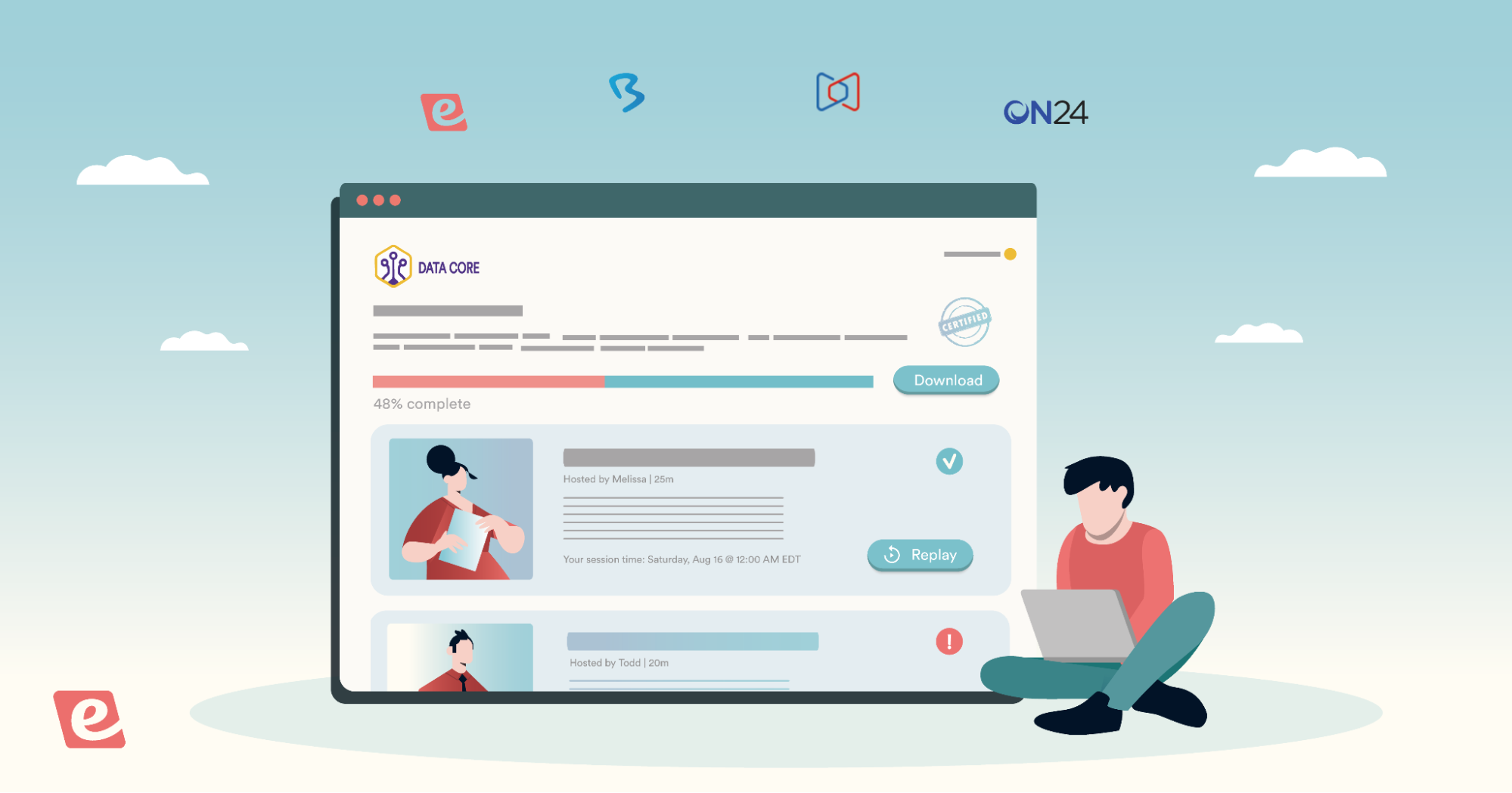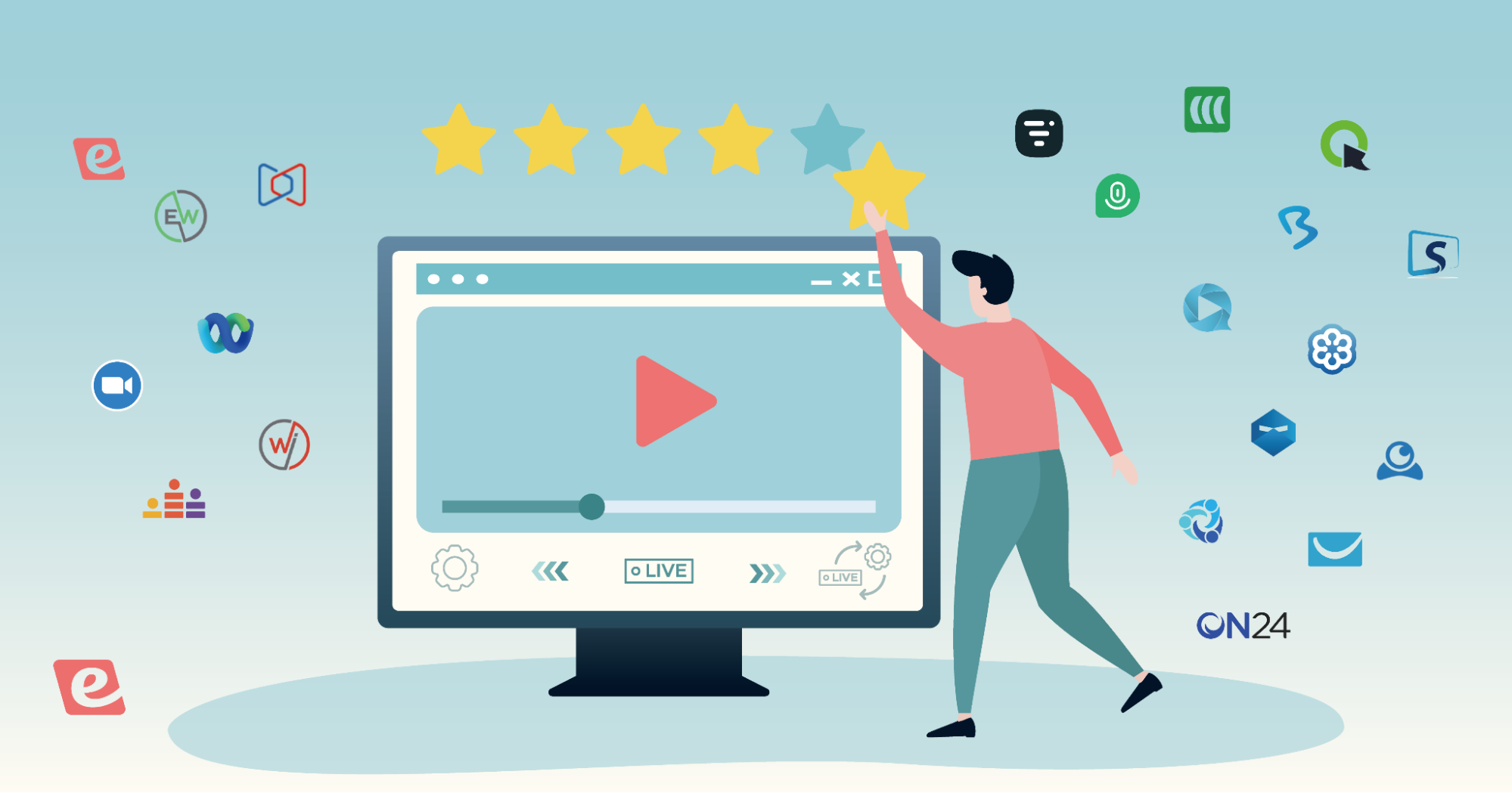A Vitally report titled The Secret Lives of CSMs revealed that 66% of customer success managers spend a significant portion of their workday on repetitive tasks while 63% wish they had more time left over for client engagement.
With two-thirds of CSMs stuck handling repetitive tasks instead of actively engaging customers, it's only logical to automate the most time-consuming processes. Doing so will free your customer success team up to focus on more complex tasks that truly require their attention.
Speaking of reclaiming time...CSMs can use our webinar automation platform, eWebinar, to escape the vicious cycle of hosting the same live onboarding webinar over and over again. To see how you can automate onboarding webinars without sacrificing interactivity or live chat, watch our on-demand demo! |


What is customer success automation?
Customer success automation is the process of using automation to streamline various customer success processes. These automations can span multiple stages of the customer journey from onboarding to renewals and even expansion.
Which customer success workflows can you automate?
We'll walk you through the top five customer success workflows that you can automate:
Sumerjámonos.
Onboarding automation
Onboarding lies at the center of every customer success strategy (as it should) but it's unquestionably the most time-consuming part of the process. For instance, hosting onboarding webinars can significantly enhance the first-time user experience (FTUE).
However, onboarding webinars also take a ton of time to plan and host. Customer success reps often find themselves hosting the same onboarding webinar over and over again for countless users across different time zones.
On the other hand, transitioning to pre-recorded tutorial videos in an attempt to escape the cycle of endless webinars often results in declining activation rates. After all, the reason onboarding webinars are so effective is they enable two-way conversations between new users and your CSMs.
The only way to get the best of both worlds is to use a webinar automation platform like eWebinar (our product) to create pre-recorded webinars with live chat capabilities so customer success managers are able to answer user questions without needing to be present at every session.

This combination culminates in a tech-touch onboarding strategy that saves your customer success team time while still an onboarding experience that feels high-touch for users. As long as users have a means of chatting with a CSM, even a recorded webinar can feel like a live demo.

Tip: Enabling our Slack integration lets customer success managers reply to the webinar chat from within a dedicated Slack channel.
Educación del cliente
While onboarding webinars — especially those that are automated and made available on demand — can provide an excellent way to offer ongoing customer education, there are additional strategies you can employ to continuously educate your customers.
Of course, different strategies will be better suited to each stage of the user journey. If customers are just getting started with your product then an onboarding checklist will be the most actionable and least overwhelming way to educate them.
As their familiarity with the product grows, you can start to introduce more complex methods of instruction such as interactive walkthroughs that guide them around multiple product areas and delve into more advanced features.
In addition to glaring attempts at customer education, you can also mix in more contextual forms of in-app guidance that only appear when they’d be relevant to users. A prime example of this would be the tooltips that only expand when users hover over a particular feature.

Source: Appcues
Last but not least, building up a resource library with tutorial videos, webinar recordings, product documentation, and answers to FAQs can set the groundwork for self-service customer education. In such cases, a little upfront effort can pay dividends for years to come.
Feedback collection
While eWebinar lets you poll and survey attendees during your webinars, it’s important to collect user feedback from a variety of different sources. The most popular options are to send user surveys out via email or to embed them within your product using in-app feedback widgets.
While email surveys used to be the default (and are still worth doing), it’s worth noting that they usually get lower response rates than in-app surveys. This is because they suffer from low open rates and run the risk of ending up in the spam folder of a user’s inbox.
In contrast, in-app survey widgets reduce the friction for users providing feedback and also yield more accurate insights since the user is actively using the product at the time of responding (thus giving you “fresher” feedback).
Tip: While it’s possible to code in-app surveys yourself, adding it to your product using third-party feedback collection tools is often the more efficient path as it saves time and streamlines response management.
Customer insights
Speaking of gathering customer feedback, you can also use customer success software to aggregate user insights from multiple sources. These platforms often support dozens of integrations that let you pull in data from every customer touchpoint then review them on a unified dashboard.
The main downside of these platforms is that they cost a lot of money to use and take a ton of time to set up. You could easily end up paying $30,000 to $50,000 per year plus waiting weeks or months before the solution is fully deployed.
That said, if you have the time and money to utilize them they can automate the process of surfacing user insights to help your customer success team focus on interpreting the customer data instead of manually sorting through it.
Tip: If you can’t afford a full-blown customer success platform then you should at the very least pay attention to which integrations your automation tools support to help you unify your tech stack.
Feature adoption
Finally, driving feature discovery and tracking adoption is a key customer success workflow that you should strive to streamline through automation. While manually adding first-party tracking code is always an option, it’s usually more time and effort than it’s worth.
Instead, you can use product adoption tools with no-code or low-code feature tagging options to speed things up. The bonus is that these tools usually also take care of sorting through the raw adoption data and surfacing actionable insights on your home dashboard.
In addition, you can also use automation to drive feature discovery itself by creating in-app flows that are triggered when certain conditions are met or if a new user lands on a particular area of your product for the first time.
Tip: eWebinar’s conversion tracking capabilities let you attribute in-app actions to webinar attendance — which makes it possible to compare product adoption rates for users who attended onboarding webinars versus those who didn’t.
Conclusión
As you can see, there are many automated workflows in the customer success world that would benefit from interactive pre-recorded webinars. If you’re planning to automate onboarding using the power of automated webinars then eWebinar will be an invaluable addition to your arsenal.
eWebinar has already helped customer success teams from Gem, Later, BombBomb, SkySlope, ActivePipe, HighNote.io, and many more scale their CS efforts beyond what they imagined was possible.
If you want to improve the customer experience while saving your CSMs time then go watch our on-demand demo that we created using eWebinar!











